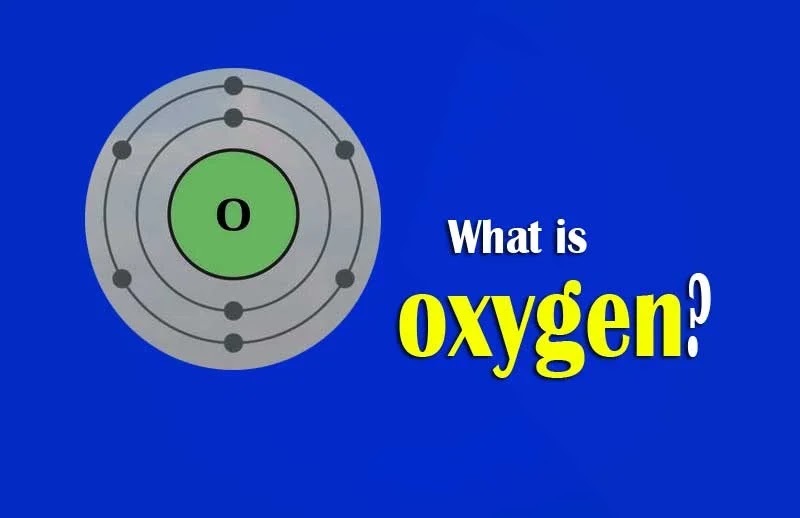What is Oxygen?
Oxygen is a chemical element, its symbol is O and its atomic number is 8. The viscosity of oxygen is usually 2. This element is usually formed by covalent or ionic bonds with other elements. Examples of some common elements that make up oleic acid are: water (H2O), sand (SiO2, silica) and iron oxide (Fe2O3). Bipolar acid is one of the two main components of air. This element is produced during the photosynthesis process of plants and it is an essential element for the respiration of all organisms (plants and animals).

Oxygen is a chemical element, its symbol is O and its atomic number is 8. The viscosity of oxygen is usually 2. This element is usually formed by covalent or ionic bonds with other elements.
History of Oxygen Discovery.
Before the discovery of amlajan, chemists were most hesitant about two things. One is the combustion of a substance which is air Whether something pulls from and what people take with breath. At that time it was thought that all combustible materials contain a substance called phloxiston. This was another of the four basic elements that the Greeks thought of. A combustible substance contains a total of five substances. During combustion, this phloxiston is more or less released from the combustible material. But there was a great deal of controversy over this idea.
In 1673, Robert Boyle concluded that during the incineration of lead and antimony, a very fine igneous substance rushed towards the metal and added to it, increasing the weight of the metal. Eighty years later, however, Lomonosov writes, Boyle’s idea was wrong. According to him air takes part during combustion and of air As the particle attaches to the metal, its weight increases.
In the eighteenth century, the science of gas was greatly improved. In 1774, scientist P. In his research paper, Bayen discusses in detail the reasons for the increase in metal mass during incineration. He said expandable and from ordinary air A strange kind of heavy substance is attached to the metal during incineration. Bynne obtained this gas by thermal decomposition of mercury-containing compounds.
Conversely, the color of mercury in the reaction of that gaseous substance with metallic mercury turned red.Unfortunately, Bain could no longer do research on this. Little did he know that he had actually worked with Amaljan. And the substance that turned red was actually mercury oxide.
In the same year, 1774, the chemist Joseph Priestley began experimenting with a compound. Shortly before this, he observed that in the presence of green trees, the closed air (which does not help in breathing) is converted into ordinary air which helps in the breathing of the organism. This discovery is known as a groundbreaking discovery for both chemistry and biology.
Priestley was the first to realize that plants abandon acid. At the same time he did another test, Sora gas (nitrogen oxide, saltpeter gas) reacts with iron powder to form an air that helps in combustion but does not help in respiration.
This air was based on the nitrous oxide phloxistine theory which he named dephlogisticated saltpeter gas. Now let’s come to the test of 1774. On August 1 of the same year in Priestle In a sealed container, he took red mercury oxide and concentrated the sun’s rays on it with the help of a large lens. The compound breaks down to produce bright metallic mercury and a gas. This gas was actually acid.
The naming of this gas after several years Amlajan which was recognized as the third element. Unlike nitrogen, this element could not be prepared from air. Rather it is prepared from solids. Priestley could only say that this new gas is a component of air. But it was not possible for him to say anything more. He also named it deflosted air, following the flowlogic theory.
After the discovery, Priestley went to Paris and spoke in detail to other French scientists, including Lavoisier. This part is very important. Because Lavoisier was able to grasp the meaning of this discovery more than Priestel. Priestley once thought his discovery was a complex one. But in the 1786 th century, inspired by Lavoisier’s ideas, he began to see it as an element.
As such, the main contributors to the discovery of amlajan were Priestley and Bayenne. The name of another scientist named C. Shelley can be added to them. In 1772, Shelley wrote a book, Chemical Treatise About Air and Fire.
But due to the publisher’s fault, the book was published in 1775. Yeh Oxygen’s description was more perfect than the description given by Priestley or Bayenne. But the publisher said he was late Could not propose his own name as the discoverer of oxygen. Because Priestel’s discovery was published in 1774. The rock produced amlajan through the decomposition of inorganic compounds.
If you need to purchase a portable medical oxygen cylinder, you can visit this page.
